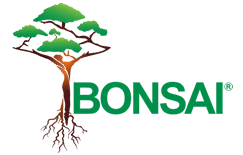Focus was one of the Gallup top 10 dominant strengths that I didn’t realize I had until I took the All 34 test and became a certified coach. My awareness of Focus being a strength of mine and the subsequent changes I made in how I do my work boosted my productivity 25 percent. In this blog, we will identify steps a person with high Focus strength – perhaps you or an employee – can take to increase performance.
Focus is one of the strengths with a label that actually reflects its definition. Those of us with Focus in our top 10 strengths have the ability to hone in on a problem, eliminate distractions, and power through to get the work done. Trying to multitask – while no one can physiologically do it – significantly impairs us because we are at our best with a singular goal focus. It is similar to a light at the end of the tunnel that we fixate on as we identify and push through milestones to reach it. The bad news is that we may not even hear someone when they talk with us while we are “in the zone” (one client actually will respond and make commitments and not recall the conversations). The intensity and output can be phenomenal.
Increased Single-Mindedness Yields Higher Performance
If you have Focus, your goal is to get your attention in one area and keep it there. That requires two actions:
- Ordering your work
- Eliminating distractions
For me, the goal is to keep my mind focused in a singular realm. This might be working on one client at a time, or it might be lumping similar tasks together (like strengths analysis for people in different businesses) so I am “in the zone” for a period of time. When I shifted my work order from priority-based to singular-client focused for longer periods of time, I was much more creative and efficient, and the productivity and the quality of my work improved. I made connections and identified issues and solutions that I may not have been able to if I were switching between tasks for different clients. Sometimes I designate a “quick task hour,” which is when I address many dissimilar tasks, but have the common trait of being quick, boring items that I tend to avoid.
Eliminating distractions is paramount.
This includes people, thoughts, and technology. For example:
- Turn off all technology notifications – especially email alerts (I ask people to text me in emergencies and that works better).
- Keep your workspace clear except for what you are working on.
- Plan your day the night before so you know exactly what to focus on when you arrive.
- Designate email check times – like 10 a.m., 2 p.m., and 5 p.m. – so that you don’t get distracted at the start of the day or while you’re working on other tasks.
- Don’t enable people to constantly interrupt you. Have “office hours” when you check email, and request your staff to ask questions then (barring an emergency, of course). At a minimum, get them used to hearing, “Mind if we deal with this in an hour when I complete this task? I’ll reach out to you then or let’s set a time.”
- If you think of a task that you need to do that is unrelated, write it down on a “parking lot list” and get back to it later. Doing this frees our mind from trying to remember and allows our brain to solely focus on the task at hand.
People with high Focus can sometimes get overwhelmed if there are too many tasks or things in front of them.
Here are two odd but viable solutions:
- Cover up everything except the item at the top of your to-do list (just fold your paper up and over the rest of the list).
- If part of your office or home is a mess, put a table cloth over it so you can’t see the mess until you have time to deal with it. A mess is not the friend of people with high Focus.
Leading People With Focus
Once you understand what they need, you have a powerhouse on your hands! Some ideas:
- Give them a clear set of priorities (not pages of them, just 3-5 at a time). Broader goals are fine if they clarify the end target and narrow the person’s attention.
- Get out of their way. The last thing they need is you distracting them.
- Help them eliminate things or people that could be distracting.
- Give them the job of keeping meetings on track – a natural role.
- Don’t assume they heard you if you talk to them when they are “in the zone.”
- Encourage them when they use their focus and you witness extraordinary results. Help them identify which strategies worked so they can duplicate those results.
Your challenge: Double down on your Focus strength this week (it if is a dominant talent theme for you), or help someone with it take those steps.





 Britta burrus design.
Britta burrus design.